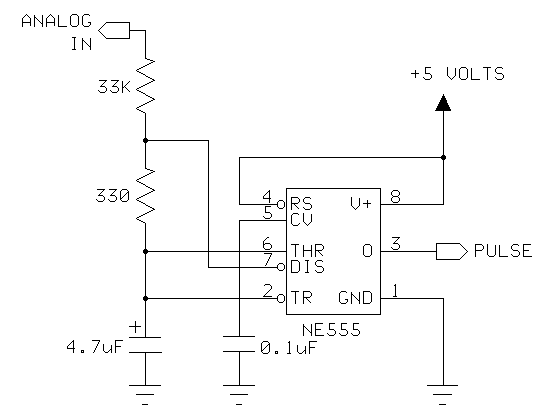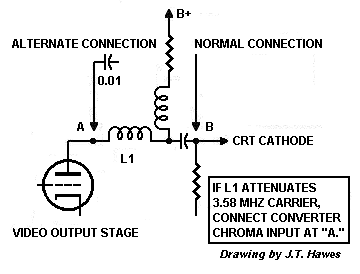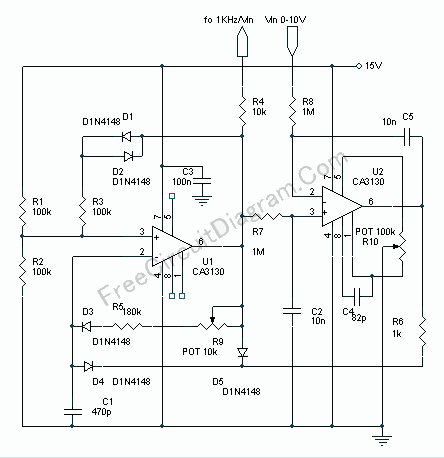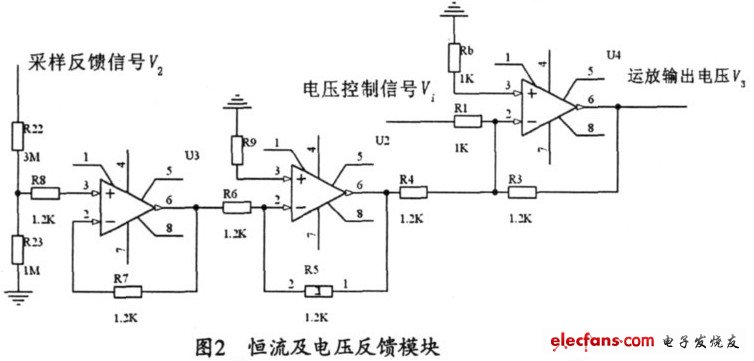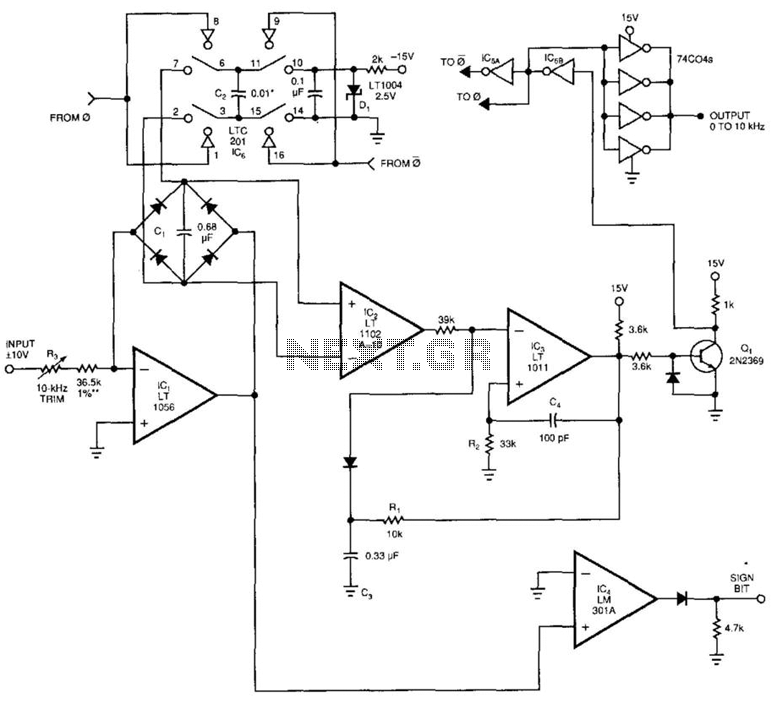
introduction to controlled rectifiers with converter
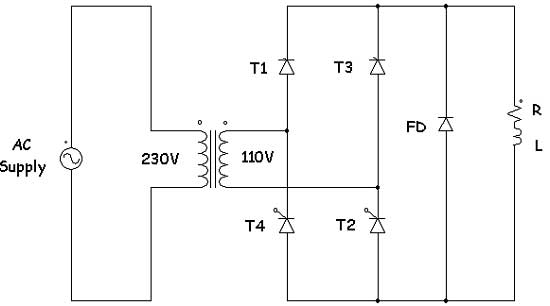
Controlled rectifiers are line-commutated AC to DC power converters that convert a fixed voltage and fixed frequency AC power supply into a variable DC output voltage. The input supply provided to a controlled rectifier is an AC supply with a fixed RMS voltage and frequency. By utilizing controlled rectifiers, a variable DC output voltage can be achieved. This is accomplished through the use of phase-controlled thyristors in the controlled rectifier circuits, allowing for variable DC output voltage and average output current by adjusting the trigger angle (phase angle) at which the thyristors are activated. The resulting load current waveform is uni-directional and pulsating, with a specific average value. Thyristors are forward biased during the positive half-cycle of the input supply and can be turned on by applying appropriate gate trigger pulses to their gate leads. The thyristor current and load current commence once the thyristors are activated. The load current persists while the thyristors conduct, and the output voltage across the load mirrors the input supply voltage through the conducting thyristors. At the point where the load current diminishes to zero, the thyristors turn off due to AC line (natural) commutation. During the negative half-cycle of the input supply, the thyristors remain reverse biased. The commutation method employed in controlled rectifier circuits is known as AC line commutation, or natural commutation. When the input AC supply voltage reverses and becomes negative, the thyristors turn off due to reverse bias. Various types of power converters utilize AC line commutation, referred to as line commutated converters. The half-wave controlled rectifier employs a single thyristor device, providing output control only during one half-cycle of the input AC supply, resulting in a low DC output. The circuit diagram of a single-phase fully controlled bridge converter is depicted with a highly inductive load and a DC source in the load circuit, ensuring continuous and ripple-free load current operation. The fully controlled bridge converter comprises four thyristors (T1, T2, T3, and T4) arranged in a full-wave bridge configuration. Each thyristor is controlled and activated by its gating signal and naturally turns off when a reverse voltage is applied across it. During the positive half-cycle, when the upper terminal of the transformer secondary winding is positively charged relative to the lower terminal, thyristors T1 and T2 are forward biased during a specific time interval. When T1 and T2 are triggered simultaneously, the load connects to the input supply through these conducting thyristors. The output voltage across the load follows the input supply voltage, resulting in V0 = Vm sin(ωt). Due to the inductive nature of the load, T1 and T2 continue to conduct even after the input voltage becomes negative. They operate together during a defined time period, and during the negative half-cycle, thyristors T3 and T4 become forward biased. T3 and T4 are triggered at a specific time, causing a reverse voltage to appear across T1 and T2, leading to their natural turn-off and transferring the load current to T3 and T4. The output voltage across the load continues to follow the supply voltage during this time. In the subsequent positive half-cycle, T1 and T2 are triggered while T3 and T4 are reverse biased and turn off.
The operation of controlled rectifiers is critical in various applications, including motor speed control, battery charging, and power supplies for industrial equipment. The ability to adjust the DC output voltage and current through phase control provides flexibility in managing power delivery to loads. The choice of thyristors, their ratings, and the design of the triggering circuit are essential for achieving desired performance characteristics, such as efficiency, thermal management, and response time. The use of inductive loads in these circuits aids in smoothing out current variations, thus minimizing ripple and enhancing the stability of the output.
In practical applications, careful consideration must be given to the design of snubber circuits to protect the thyristors from voltage spikes during turn-off, as well as to ensure that the triggering mechanism is reliable and responsive. Additionally, thermal management solutions, such as heat sinks or active cooling, may be required to prevent overheating of the thyristors during prolonged operation. Overall, controlled rectifiers represent a fundamental technology in power electronics, enabling efficient conversion and control of electrical energy.Controlled rectifiers are line commutated ac to dc power converters which are used to convert a fixed voltage, fixed frequency ac power supply into variable dc output voltage. The input supply fed to a controlled rectifier is ac supply at a fixed rms voltage and at a fixed frequency.
We can obtain variable dc output voltage by using controlled rec tifiers. By employing phase controlled thyristors in the controlled rectifier circuits we can obtain variable dc output voltage and variable dc (average) output current by varying the trigger angle (phase angle) at which the thyristors are triggered. We obtain a uni-directional and pulsating load current waveform, which has a specific average value. The thyristors are forward biased during the positive half cycle of input supply and can be turned ON by applying suitable gate trigger pulses at the thyristor gate leads.
The thyristor current and the load current begin to flow once the thyristors are triggered (turned ON) say at ‰t= ±. The load current flows when the thyristors conduct from ‰t= ± to ². The output voltage across the load follows the input supply voltage through the conducting thyristor.
At ‰t= ², when the load current falls to zero, the thyristors turn off due to AC line (natural) commutation. The thyristor remains reverse biased during the negative half cycle of input supply. The type of commutation used in controlled rectifier circuits is referred to AC line commutation or Natural commutation or AC phase commutation.
When the input ac supply voltage reverses and becomes negative during the negative half cycle, the thyristor becomes reverse biased and hence turns off. There are several types of power converters which use ac line commutation. These are referred to as line commutated converters. Half wave controlled rectifier which uses a single thyristor device (which provides output control only in one half cycle of input ac supply, and it provides low dc output).
The circuit diagram of a single phase fully controlled bridge converter is shown in the figure with a highly inductive load and a dc source in the load circuit so that the load current is continuous and ripple free (constant load current operation). The fully controlled bridge converter consists of four thyristors T1, T2, T3 andT4 connected in the form of full wave bridge configuration as shown in the figure.
Each thyristor is controlled and turned on by its gating signal and naturally turns off when a reverse voltage appears across it. During the positive half cycle when the upper line of the transformer secondary winding is at a positive potential with respect to the lower end the thyristors T1 andT2 are forward biased during the time interval ‰t= 0 to.
The thyristors T1 andT2 are triggered simultaneously, the load is connected to the input supply through the conducting thyristors T1 andT2. The output voltage across the load follows the input supply voltage and hence output voltage V0=Vm sin ‰t.
Due to the inductive loadT1 andT2 will continue to conduct beyond ‰t=, even though the input voltage becomes negative. T1 andT2 conduct together during the time period ± to ( + ± ), for a time duration of radians (conduction angle of each thyristor =180 ) During the negative half cycle of input supply voltage for ‰t= to 2, the thyristorsT3 andT4 are forward biased.
T3 andT4 are triggered at ‰t=( + ± ). As soon as the thyristorsT3 andT4 are triggered a reverse voltage appears across the thyristors T1 andT2 and they naturally turn-off and the load current is transferred fromT1 andT2 to the thyristorsT3 andT4. The output voltage across the load follows the supply voltage andV0=-Vm sin ‰t during the time period ‰t=( + ± ) to(2 + ± ).
In the next positive half cycle whenT1 andT2 are triggered, T3 andT4 are reverse biased and they turn-off. The figure shows the waveforms of the input supply voltage, the output load voltage, the constant load current with neglig
🔗 External reference
The operation of controlled rectifiers is critical in various applications, including motor speed control, battery charging, and power supplies for industrial equipment. The ability to adjust the DC output voltage and current through phase control provides flexibility in managing power delivery to loads. The choice of thyristors, their ratings, and the design of the triggering circuit are essential for achieving desired performance characteristics, such as efficiency, thermal management, and response time. The use of inductive loads in these circuits aids in smoothing out current variations, thus minimizing ripple and enhancing the stability of the output.
In practical applications, careful consideration must be given to the design of snubber circuits to protect the thyristors from voltage spikes during turn-off, as well as to ensure that the triggering mechanism is reliable and responsive. Additionally, thermal management solutions, such as heat sinks or active cooling, may be required to prevent overheating of the thyristors during prolonged operation. Overall, controlled rectifiers represent a fundamental technology in power electronics, enabling efficient conversion and control of electrical energy.Controlled rectifiers are line commutated ac to dc power converters which are used to convert a fixed voltage, fixed frequency ac power supply into variable dc output voltage. The input supply fed to a controlled rectifier is ac supply at a fixed rms voltage and at a fixed frequency.
We can obtain variable dc output voltage by using controlled rec tifiers. By employing phase controlled thyristors in the controlled rectifier circuits we can obtain variable dc output voltage and variable dc (average) output current by varying the trigger angle (phase angle) at which the thyristors are triggered. We obtain a uni-directional and pulsating load current waveform, which has a specific average value. The thyristors are forward biased during the positive half cycle of input supply and can be turned ON by applying suitable gate trigger pulses at the thyristor gate leads.
The thyristor current and the load current begin to flow once the thyristors are triggered (turned ON) say at ‰t= ±. The load current flows when the thyristors conduct from ‰t= ± to ². The output voltage across the load follows the input supply voltage through the conducting thyristor.
At ‰t= ², when the load current falls to zero, the thyristors turn off due to AC line (natural) commutation. The thyristor remains reverse biased during the negative half cycle of input supply. The type of commutation used in controlled rectifier circuits is referred to AC line commutation or Natural commutation or AC phase commutation.
When the input ac supply voltage reverses and becomes negative during the negative half cycle, the thyristor becomes reverse biased and hence turns off. There are several types of power converters which use ac line commutation. These are referred to as line commutated converters. Half wave controlled rectifier which uses a single thyristor device (which provides output control only in one half cycle of input ac supply, and it provides low dc output).
The circuit diagram of a single phase fully controlled bridge converter is shown in the figure with a highly inductive load and a dc source in the load circuit so that the load current is continuous and ripple free (constant load current operation). The fully controlled bridge converter consists of four thyristors T1, T2, T3 andT4 connected in the form of full wave bridge configuration as shown in the figure.
Each thyristor is controlled and turned on by its gating signal and naturally turns off when a reverse voltage appears across it. During the positive half cycle when the upper line of the transformer secondary winding is at a positive potential with respect to the lower end the thyristors T1 andT2 are forward biased during the time interval ‰t= 0 to.
The thyristors T1 andT2 are triggered simultaneously, the load is connected to the input supply through the conducting thyristors T1 andT2. The output voltage across the load follows the input supply voltage and hence output voltage V0=Vm sin ‰t.
Due to the inductive loadT1 andT2 will continue to conduct beyond ‰t=, even though the input voltage becomes negative. T1 andT2 conduct together during the time period ± to ( + ± ), for a time duration of radians (conduction angle of each thyristor =180 ) During the negative half cycle of input supply voltage for ‰t= to 2, the thyristorsT3 andT4 are forward biased.
T3 andT4 are triggered at ‰t=( + ± ). As soon as the thyristorsT3 andT4 are triggered a reverse voltage appears across the thyristors T1 andT2 and they naturally turn-off and the load current is transferred fromT1 andT2 to the thyristorsT3 andT4. The output voltage across the load follows the supply voltage andV0=-Vm sin ‰t during the time period ‰t=( + ± ) to(2 + ± ).
In the next positive half cycle whenT1 andT2 are triggered, T3 andT4 are reverse biased and they turn-off. The figure shows the waveforms of the input supply voltage, the output load voltage, the constant load current with neglig
🔗 External reference
